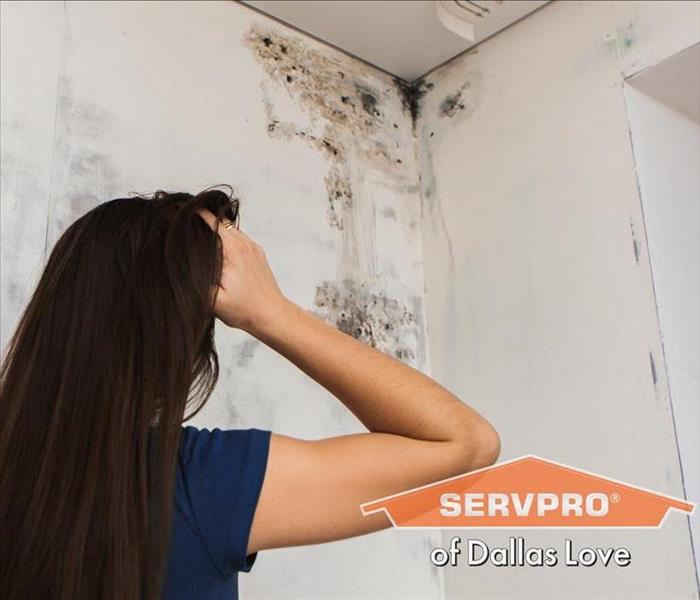Early Signs of Water Damage on the Ceiling
4/5/2022 (Permalink)
 Have you noticed signs of water damage on your ceiling? If so, contact SERVPRO of Dallas Love today.
Have you noticed signs of water damage on your ceiling? If so, contact SERVPRO of Dallas Love today.
Have you noticed discoloration on your ceiling or water dripping from it? The good news is, it’s something relatively easy to fix. But it’s crucial to act fast before the leaking water does more damage to the ceiling.
When a leak occurs, it’s not always easy to locate the source. And a lot of problems can arise because of this. So, it’s crucial to know how to identify a water-damaged ceiling and steps you can take once you spot the signs of water damage.
6 Major Signs to Look Out for Water Damage on Ceiling
1. Water Stains
Rusty, yellow, wet, brown, or dark visible patches are common indicators of water-damaged ceilings. This might mean there is a water leak that can cause further ceiling water damage if not fixed.
2. Mold Growth
Black or green patches in corners of ceilings and walls are a sure sign of water damage. Mold growth happens when there’s a long-term issue with excessive moisture.
3. Peeling Wallpaper or Swollen Drywall
Subtle signs of water damage from a leaky roof or pipe could appear, not on the ceiling but the walls. Have you noticed wallpaper coming away from the wall near the top? Or is the drywall bulging? If so, you may need to get a leak fixed.
4. Offensive Odor
Due to mildew and mold growth on ceilings, the quality of air indoors deteriorates. This produces a funky, musty smell in your home that clearly indicates water damage somewhere in the building.
5. Ceiling Cracks
Water-damaged ceilings crack easily and can be easily visible depending on the extent of the damage. Regularly inspect your ceilings for small hairline cracks, even in rooms that you rarely use.
6. Sagging Ceiling
Constantly moist wood and drywall caused by water damage will cause the ceiling to sag. This process may start as bubble-like bulges or a dome shape.
Common Causes of Ceiling Water Damage
To prevent water damage on a ceiling, it’s vital to know how to protect your home. Water damage restoration can be costly, but it’s highly preventable.
Here are some reasons why water leaks into homes:
- Extreme weather conditions like storms, hurricanes, heavy rains, ice, and snow can damage your roof. This creates holes and cracks for water to seep through, damaging the ceilings.
- Clogged gutters full of leaves and debris cause water to get under the eaves or damaged shingles.
- Faulty water pipes cause leakages that damage ceilings.
How to Fix a Water Damaged Ceiling
It is essential to control the water-damaged ceiling situation before it gets severe and costs you a few dollars — if not thousands of dollars — in repairs.
First, it’s vital to prevent an escalation of the problem. If you notice water dripping, put some buckets under the dripping to avoid further damage.
Next, you may need to hire a contractor to locate and fix the source of the leak.
Once the leak is fixed, it’s a good idea to hire a professional water damage expert. This way, you get an understanding of the extent of the damage. Quality repairs like drying out the room or attic will also minimize any future issues with mold and dampness.
Have you noticed signs of water damage on your ceiling? If so, contact SERVPRO of Dallas Love to learn about our Dallas water damage restoration services.
Reach out today for a free consultation and professional assistance at (214) 272-7600.






 24/7 Emergency Service
24/7 Emergency Service